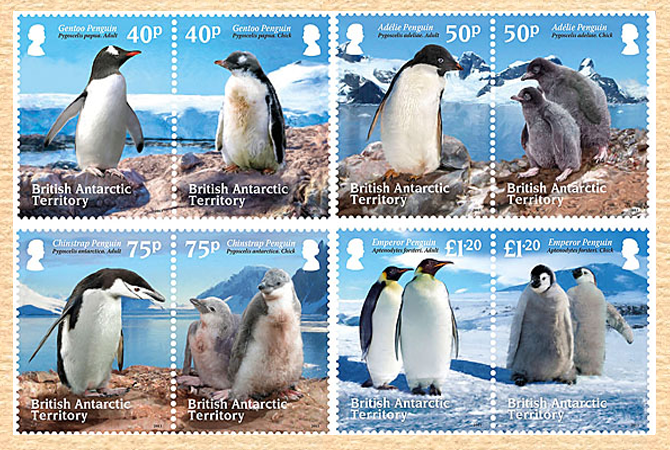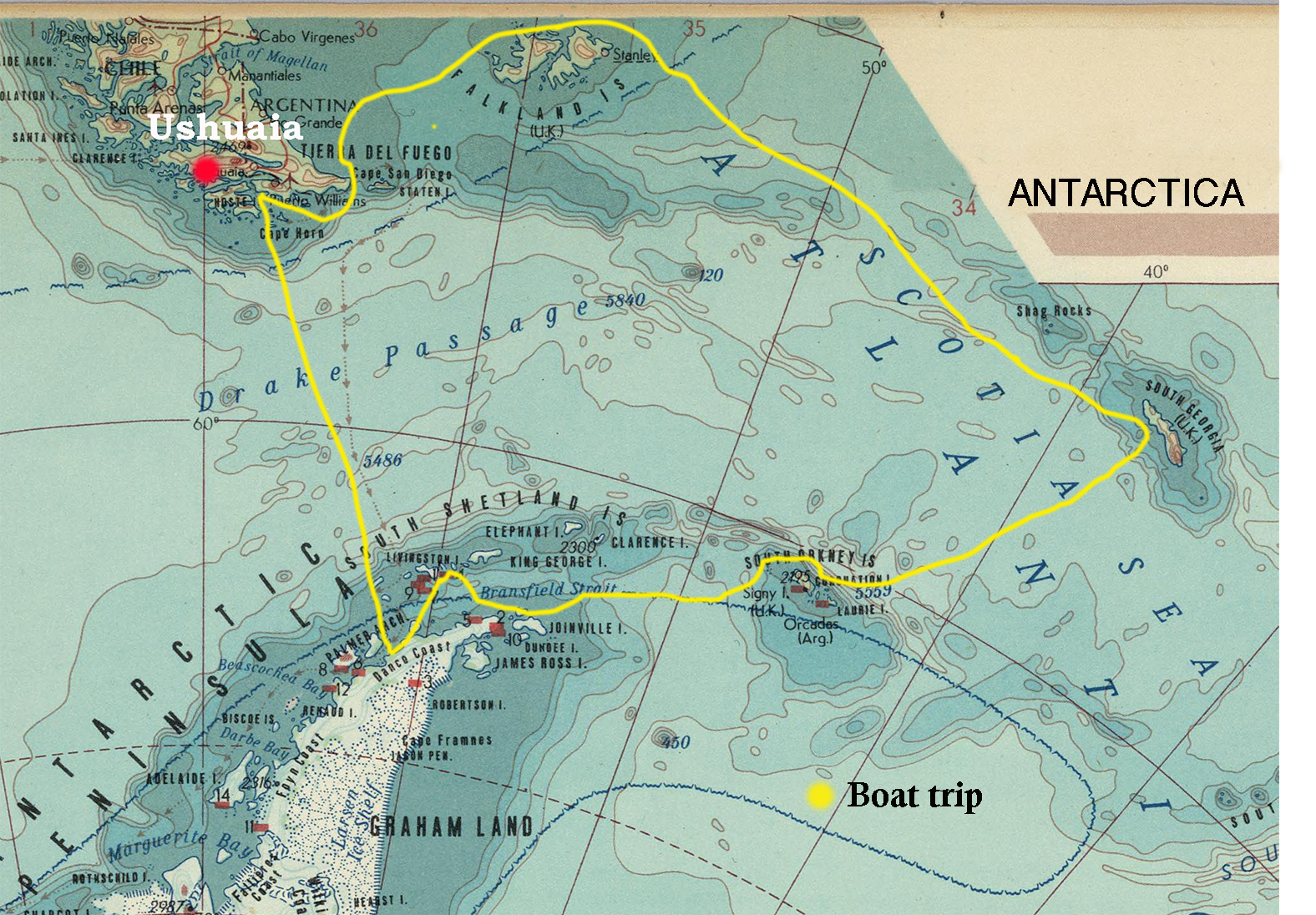
9 January to 28 January, 2019
Lower fare in doble Cabin- 12.060.-
Highest fare in double Cabin 24.036€
This Falkland Islands, South Georgia, and Antarctic Peninsula cruise is an animal-lover’s dream come true. The expedition explores one of the last untamed areas on Earth – a land of ruggedly beautiful landscapes and amazingly varied wildlife.
Gentoo, King, Magellanic and Rockhopper Penguins, Black-browed Albatrosses, King Cormorants,South Polar Skua, Snow Petrel,Antarctic Petrel, Fin Whale.
About 98% of Antarctica is covered by the Antarctic ice sheet, a sheet of ice averaging at least 1.0 mile (1.6 km) thick. The continent has about 90% of the world’s ice (and thereby about 70% of the world’s fresh water). If all of this ice were to melt, sea levels would rise about 200 ft (60m). Antarctica is divided into two contrasting parts by the Transantarctic Mountains that cross the continent close to the ‘neck’ between the Weddell and Ross Seas.
West Antarctica, which includes the Antarctic Peninsula, is smaller and consists of four land units each with a different history. There has been major volcanic activity here in recent geological times and there are still a few active volcanic centers. Deep waters exist between land units and the West Antarctic Ice Sheet, which can be considered to a be floating ice mass held in place by land peaks. The West Antarctic Ice Sheet has been of recent concern because of the real, if small, possibility of its collapse. If the sheet were to break down, ocean levels would rise by several metres in a relatively geologically short period of time, perhaps a matter of centuries. ALE has been supporting researchers from the University of New South Wales who are investigating how West Antarctica has responded to temperature changes in the recent geological past.
Most of East Antarctica is still not well known by geologists but it does include the Transantarctic Mountains. The shield is very depressed in the centre, where it carries the bulk of the Antarctic ice sheet. Large areas lie deeper than 3,280ft (1000m) below sea level.
Few terrestrial vertebrates live in Antarctica. Invertebrate life includes microscopic mites, lice, nematodes, tardigrades, rotifers, krill and springtails. Recently ancient ecosystems consisting of several types of bacteria have been found living trapped deep beneath glaciers. The flightless midge Belgica antarctica, up to 0.2 inches (6mm) in size, is the largest purely terrestrial animal in Antarctica. The snow petrel is one of only three birds that breed exclusively in Antarctica. The wide variety of marine animals includes blue whales, orcas, colossal squids, fur seals, and several species of penguins. Emperor and Adélie penguins make the Antarctic continent their true home, while others (chinstrap, gentoo, and macaroni) breed on the northern tip of the Antarctic Peninsula, where conditions are less harsh.
While searching for marine reptile bones, reasearchers came across unusual bones on the ocean bottom near James Ross Island. The fossilized remains included pieces with characteristics only seen in meat eating theropods or “beast-footed” dinosaurs like Tyrannosaurus rex and smaller carnivores. The team eventually concluded that they had found a species of dinosaur never previously recorded.

In the afternoon, we embark in Ushuaia, Tierra del Fuego, Argentina, the southernmost city in the world located at the Beagle Channel and sail through this scenic waterway for the rest of the evening.
Entering the westerlies the ship is followed by several species of albatrosses, storm petrels, shearwaters and diving petrels.
In the Falkland Islands (Malvinas) we plan to spend the whole day on the fascinating western side of the archipelago. A hike along the Shore of Carcass Island will give us views of Magellanic and Gentoo-Penguins, as well as close encounters with water fowl and Night herons and passerines. On Saunders we will be able to observe four species of breeding penguins (Gentoo, King, Magellanic and Rockhopper), Black-browed Albatrosses and King Cormorants.
Visiting Stanley, the capital of the Falklands, we can experience Falkland culture, which has some South American characteristics as well as Victorian charm. In Stanley and the surrounding area we can see quite an important number of stranded clippers from a century ago. All passengers are free to wander around on their own. We recommend a visit to the local church and museum (admission fees not included).
On our way to South Georgia we will cross the Antarctic Convergence. Entering Antarctic waters, the temperature may drop significantly in the time span of only a few hours. Near the Convergence we will see a multitude of southern seabirds near the ship; several species of Albatrosses, Shearwaters, Petrels, Prions and Skuas.
In the early afternoon of day 7 we arrive at our first activity site in South Georgia. Weather conditions on South Georgia can be challenging and will largely dictate the program. Sites that may be visited include: Prion Island, where we will witness the breeding efforts of the huge Wandering albatross and enjoy watching their displays (the island is closed for visitors during the early part of the breeding season from 20 Nov – 07 January). In Fortuna Bay, penguins and seals inhabit the beaches. We may follow the final section of Shackleton’s route to Stromness, the abandoned whaling village. The route leads us across the mountain pass past the “Shackleton Waterfall”. The terrain is partly swampy and some small streams may have to be crossed along the way. At Grytviken, we will also see an abandoned whaling station, where King penguins now walk in the streets and Elephant seals have taken residency. Here we will also offer a visit to the Whaling History Museum as well as to Shackleton’s grave nearby. Salisbury Plain, St Andrews Bay and Gold Harbour house the three largest King penguin colonies in South Georgia but are also home to a substantial number of Antarctic fur seals during the breeding season (December – January). We will depart from South Georgia in the afternoon of day 10.
A multitude of seabirds will again follow the ship southwards. At some point, we might encounter sea-ice, and it is at the ice-edge where we might have a chance to see some high-Antarctic species like the South Polar Skua and Snow Petrel.
Weather and ice depending we hope to visit to Orcadas station, an Argentinean base located on Laurie Island in the South Orkney Island archipelago. The friendly base personnel will show us their facilities and we can enjoy the wonderful views of the surrounding glaciers. Alternatively, we may attempt a landing in Shingle Cove on Signy Island.
We will pass large icebergs and have a good chance of Fin whales on the way south. In addition, we have the best chances on the trip to see Antarctic Petrels around the ship.
If the ice permits us, we will sail into the Weddell Sea. Huge tabular icebergs will announce our arrival to the eastern side of the Antarctic Peninsula. We hope to visit Paulet Island with a huge number of Adélie penguins and Brown Bluff located in the ice clogged Antarctic Sound, where we may set foot on the Continent. If sea ice conditions are not favourable to enter the Weddell Sea from the east, we set course for Elephant Island and head into the Bransfield Strait between South Shetland Island and the Antarctic Peninsula and attempt to gain access to the Antarctic Sound from the northwest.
On our way north a great selection of seabirds will follow the ship while crossing the Drake Passage.
We arrive in the morning in Ushuaia and disembark.
To Know more about the vessel "Plancius"
please visit https://oceanwide-expeditions.com/our-fleet/m-v-plancius